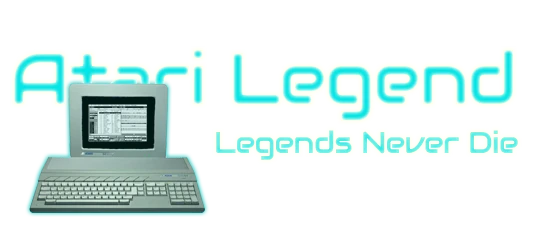

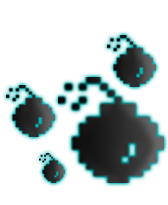





Tord Jansson was one of the programmers at the amazing Unique Developments Sweden. He helped to create 2 of the most iconic games during the final years of the ST's lifespan, Obsession and Substation. Tord was a member of UDS from the very beginning, up until its demise. During the years, Tord did not only work on ST games, he was also programmer and project lead on numerous other big budget titles for many systems. You want to learn more about the history of the company that pushed the boundaries of the STe? Or ever wondered who created the fastest tracker player in the ST demo scene? Look no further...
There is currently no profile available in our database
1) Introduction
2) History
3) The Computer collection
4) Education
5) Building a legend - Obsession
6) Bad Business decissions?
7) The UDS kids
8) The music technology
9) A carreer at UDS
10) Futurama
11) Ex-collegues
12) The memories
13) Amiga Obsession
14) Life after UDS
15) Goals in life
16) Gaming
17) Favorites
18) Firebee
19) Final words
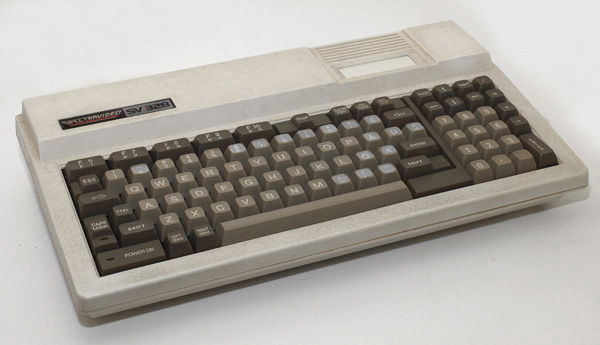
The Spectravideo is the computer on which Tord did his first steps into the world of computer programming...
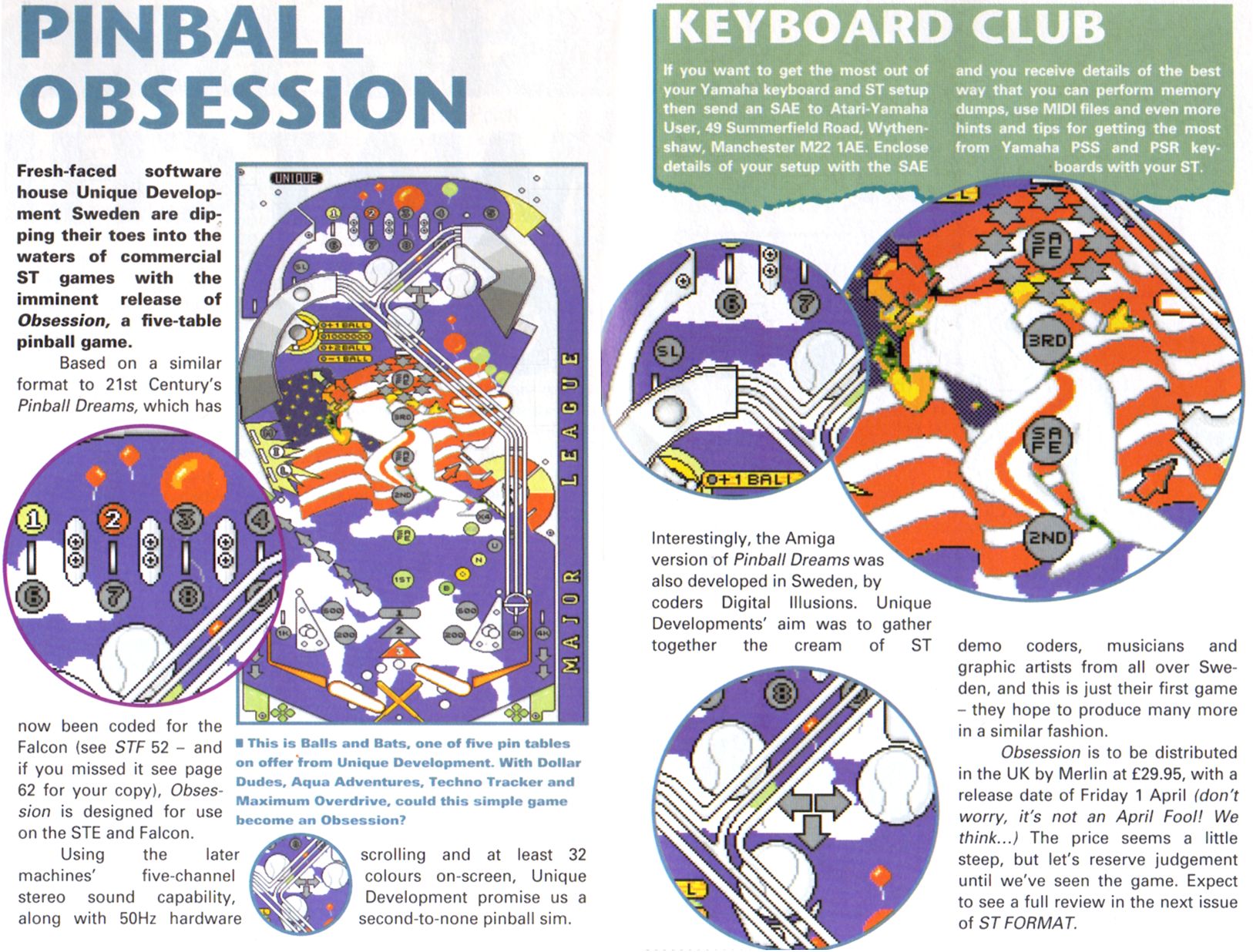
This is an early version of Obsession. The original idea was to make a simple shareware pinball game for the STE, on the level of 'Smash Hit Tennis'
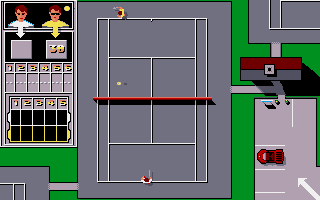
'Smash Hit Tennis' was the very first game from UDS. Created by one of the founding members of the company, Peter Zetterberg.
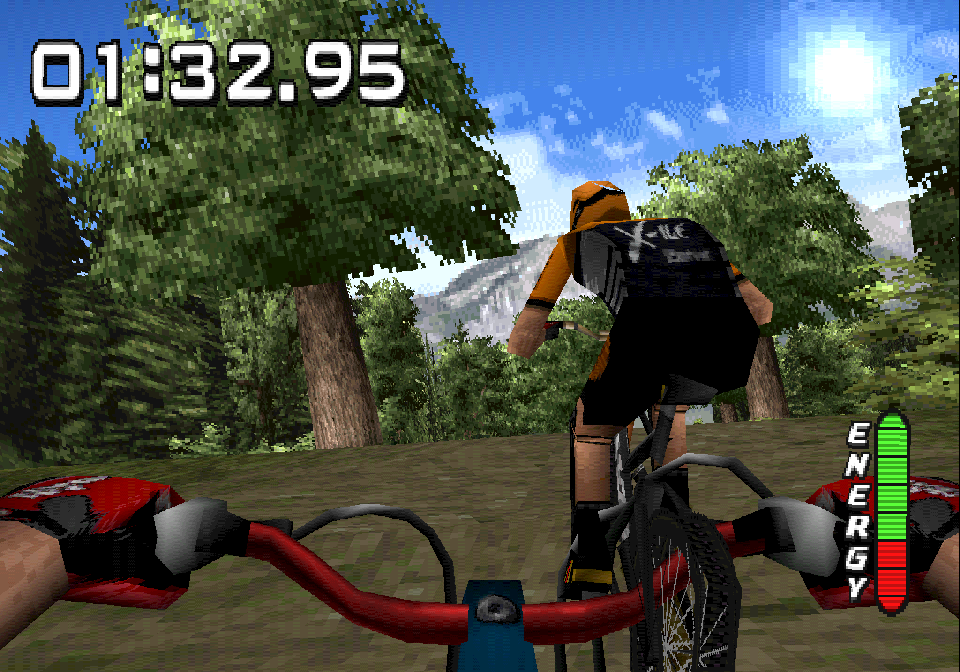
'No Fear Downhill Mountainbiking' on the PS1. 'In the end I’m not so proud of the result, but I’m proud of the effort put into the project by the team.'
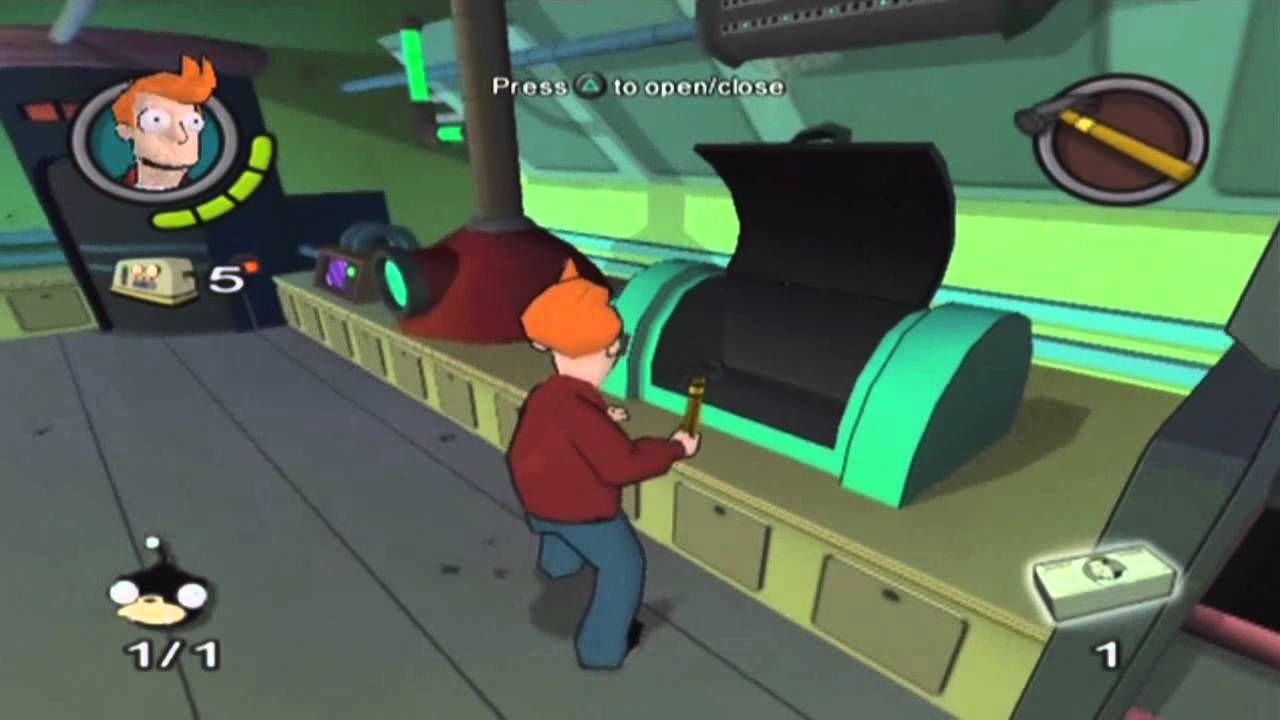
The 'Futurama' game should have been something good for UDS, but it ended up being a complete disaster
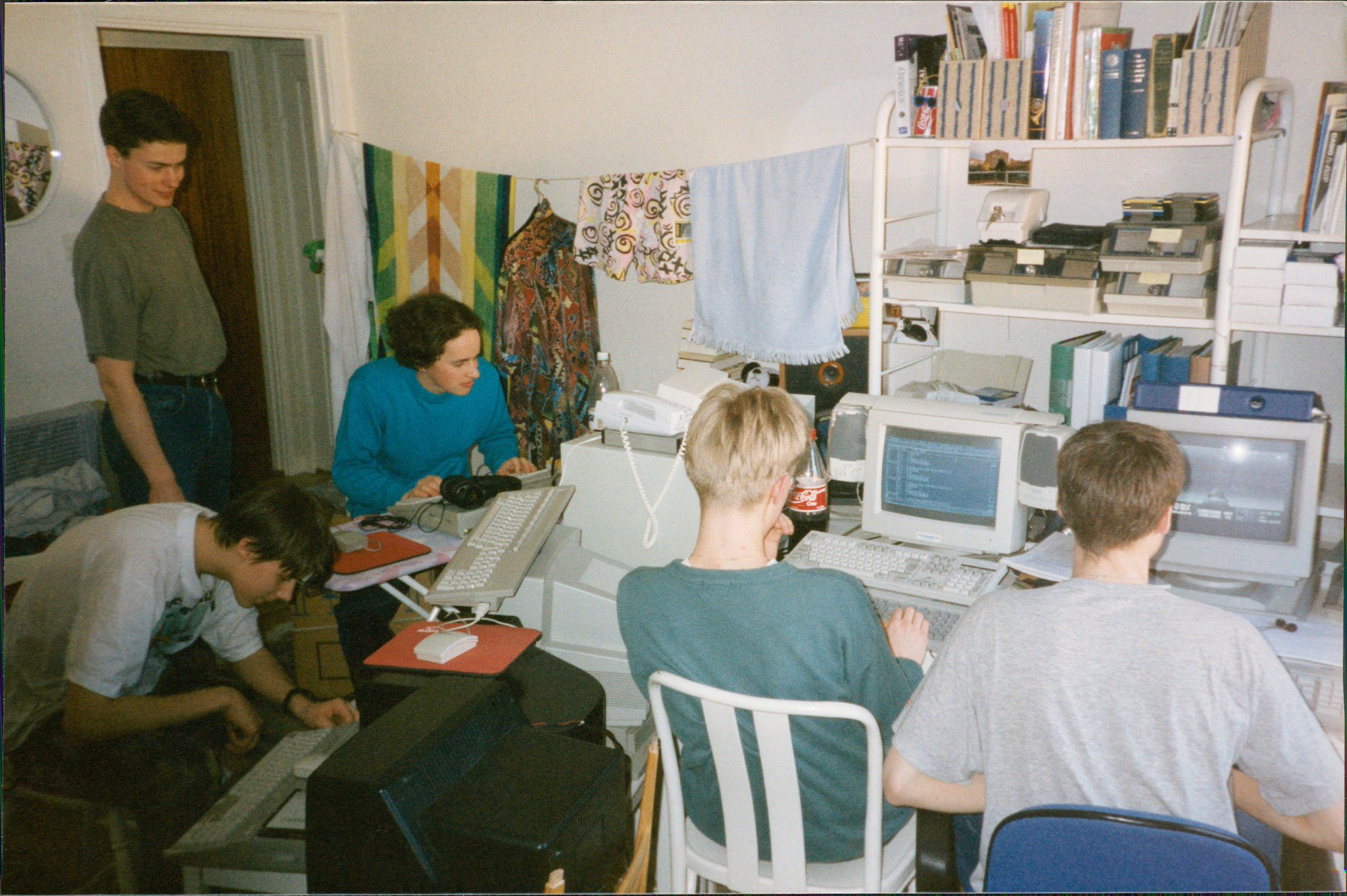
This picture was taken before UDS had an actual office. The Substation team came together during a long weekend off school for a 'coding sprint' (more info in the interview).
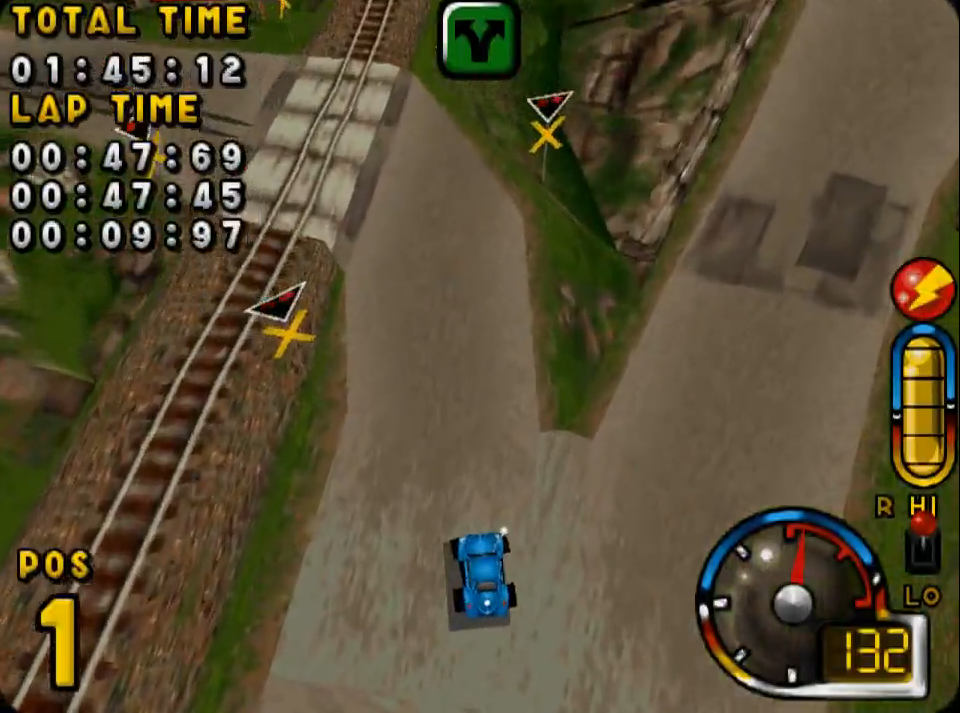
Ignition - UDS's first attempt on a PC game and a very good game indeed, even though it wasn't a commercial success.
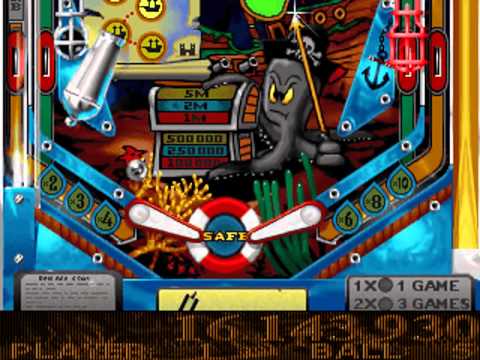
A Falcon specific version of Obsession was in the making. Eventually it turned into another beast for the PC called 'Absolute Pinball'. A great game, sadly the Falcon version was never finished.
1) Hello Tord, nice of you to join us. I always start with the intro question, and this will be no exception. Please introduce yourself to the public. Who is Tord Jansson?
I’m a 43 year old software developer and entrepreneur that lives in Norrköping, a town in Sweden with approx 130000 citizens. I’m recently divorced and have no kids, but a wonderful dog that I share with my ex-wife.
When I don’t work on my projects, twiddle with my computers and do household chores, I take walks with my dog, go jogging or biking, hang with friends (playing board games or watching TV) and do meditation.
I’m currently self-employed, working on my hobby project since almost 18-years that I’ve just turned into my fulltime work, a GUI Framework called WonderGUI.
2) Tell us a bit about your past. When did your interest in computers, programming and/or games first surfaced? How old were you?
I grew up on a somewhat secluded farm in the south of Sweden as the youngest of four brothers. I was kind of introvert from the start and liked to spend time indoors on my own fantasizing, reading comics, watching TV, drawing, playing with Lego and such.
I’ve held a deep fascination for computers for as long as I can remember but there wasn’t a single computer or video game around when I grew up. My parents didn’t have one and none of my friends' families had one either. I remember looking at adverts for home computers in mail order catalogs and dreaming about having one from probably the age of six or seven, but my parents didn’t want to buy such an expensive toy for me.
The first contact I had with a video game was something with a built in pong-clone and paddles that my cousins had for a while. I remember being totally hooked and playing it all days long during our visits from when we arrived until we left, until one day they said it was broken. Looking back I believe they lied to keep me from sitting there all the time.
Then around the age of 11 me and my family visited my oldest brother who was studying far from home. He had a Spectravideo 328 that I was allowed to play on and after the visit he said that I could borrow it since he didn’t need it anymore. That made me very happy. ![]()
3) Which other computers have you owned? Did you have special interest in the Atari ST? What is your favorite computer/technology to date?
The Spectravideo 328 I borrowed from my brother stayed with me for about a year so I count that as my first. Then a Commodore 128, Atari 520ST, 520STE (upgraded to 2.5 mb), Atari Falcon 030 (4mb) and various PCs starting from a Pentium 133 with 16 mb.
Currently I own two stationary PC’s, two PC laptops, one mini PC, my old STE which I’ve kept through all the years and a Firebee.
Yes, the Atari ST/STE/Falcons were definitely special to me, they were the center of my life as a teenager. My social life was really built around it with nearly all my friends having Ataris, gathering to play together, learn things, copy games, discuss things, going to copy parties together and so on. It was a great community that I really felt as a part of and it was the Ataris that kept us together.
4) Did you learn to program at school? What is your education?
I learnt to program on the Spectravideo 320 at the age of 10 or 11, simply because I wanted to use the computer. It had a BASIC manual translated to Swedish and I grew tired of playing the only two games I had over and over again. If I would have had more games I probably never would have started to program. When I got stuck a few times, my older brother helped me. After a while I got stuck for good since the manual didn’t teach more than the basics, so I never learnt to make any games myself except for a small text-based interactive adventure.
After I upgraded to a C-128 I lost interest in programming since I had access to tons of games. Later, when I was around 14 I upgraded to the ST along with a friend. My friend showed some interest in programming and after a while bought STOS. I started helping him a bit with the limited knowledge I had and then I got hooked. STOS was amazing, here you could do moving graphics, sound and input with just a small effort and it was very easy to learn. At the same time I got hooked on demos, finding them just as fascinating as games and me and my friend started to make small demos in STOS on our own, me doing the programming and him doing the graphics. A year or so later we found out that some neighbor village teenagers also were Atari ST users (there were only a few of us in my area, Amigas outnumbered Ataris by probably 10-1). We started to hook up to swap games, play Midi-Maze and show off the small things we had managed to program (in STOS or GFA-Basic), competing with each other in small, named groups. When one of the older kids bought Devpac and announced that he would learn assembler, I knew I needed to bite the bullet and do the same… He soon lost his interest, but I had gotten hooked on the possibilities with assembler.
I then joined a new demo group that was forming called “New Core”. That was key to my progress, as I learnt so much from the others in that group.
As far as school is concerned, I was studying economics in high school when all this took place. I never understood how high school studies of nature or technology would pave the way to future work with computers when I applied and I never had an interest in biology, chemical experiments or mechanical engineering, which was what they were showing to interest us in those educations. So I went for economics which had fascinated me since I was a kid. Upon finishing high school I had realized my mistake, but didn’t want to “waste” another year on complementary math and physics studies before going to university. Therefore I went for System Sciences which I thought would be a good mix of my knowledge in economy and fascination for computers. However, I had only just started to study when UDS was starting up and after just two semesters I left my studies to focus all my time and energy on making games.
5) You were one of the programmers of the fantastic game Obsession. This has always been a big deal for us ST owners. Are you aware of this? Did you know you were creating something special with this game?
I’m glad to hear you call it a big deal for ST(E) owners. We got a lot of attention back then but later on I’ve gotten the impression that we were too late and that only a minority of what today is the “Atari retro community” ever played it since many already had left the ST scene by then, only to get back in many years later.
I was a perfectionist back then and I guess I’m partly to blame for raising the bar. The original idea was to make a simple shareware pinball game for the STE, on the level of Smash Hit an earlier tennis game by one of the original founders. But they wanted some good tracker-based music for the game and I had developed one of the leading tracker players back then so they brought me in. I urged them to bring in Per Almered (Excellence in Art) to make the music and Hans Härröd (Shrimp of New Core, who was my room mate at university) to use his routines for border breaking and raster colors. Once it was clear they would have top notch music and technology they also realized that they needed better graphics, searched for a candidate and found Jimmy Gustafsson.
Looking back now, I realize that I never saw other Atari games as the competition, it was Pinball Dreams which was the model for what we wanted to achieve and the demos on the demo scene, with all the border breaking, extended palettes, tracker music and 50Hz updates of loads of graphics. I also knew what should be possible and was steadfast on us not settling for less. The Atari users had been longing for Pinball Dreams for a long time and we were god damn it not gonna make a bad copy!
Until the end we were struggling to get everything to work and get it shipped in time, many of us feeling that the project had grown too big and that we were out of our depths. It was only on our release/Christmas party that year that it dawned on me what we had achieved when Peter Zetterberg proudly revealed that ST Review over the phone had told him that they were to given Obsession their highest review score ever, 98%! That was a fantastic feeling! ![]()
6) From a business perspective, releasing an STe only game in 1994 or even worse, one in 1995 (Substation) seemed like risky business, as the system was almost dead. I am very thankful you guys did, but do you have any idea why this was decided?
Back then most of us were die hard Atari fans and from start only Carl worked fulltime on Obsession thanks to governmental startup support, so we didn’t consider the economic aspects so much. Other game companies were still releasing games for the Atari when we started, so if they could do it profitably, why shouldn’t we? At least for me it was a life-style choice. The Atari community was my world and if I could make a living out of working with Atari computers, even if the pay was low, that was what I was going to do! I think the others felt similar, although maybe not as strongly as me.
Another factor was that we didn’t realize how long it would take us to make the game and how fast the Atari game market would sink. When we started we thought it would take less than 6 months, in the end it took over a year. If we would have released when we started we would probably have sold 30.000 copies, in the end we sold less than 1/10 of that.
7) UDS was your first employer. When I look at pictures of those days or see videos on youtube, you all looked SO young :
- Atari's everywhere
- A little bit later
How old were you guys anyway?
Yes, most of us were skipping or dropping out of University to do this and it was the first real job for most of us. Notable exceptions were Peter and Michael (the two founders) who were a few years older and left their jobs when things started to roll. The youngest was Olov who started working for UDS at the age of 14, but most of us were 18-20 when we started. I think Peter and Michael were 23.
Back then the demo scene in Sweden had fostered a great deal of teenage computer wizards and graphics artists who had grown up on Ataris and Amigas and would love to make computer games for a living, but no such jobs were available in Sweden. So when opportunity came along, we were many who were ready to take a leap of faith. For the first two years it wasn’t really a job as most people would define it...
8) You seem to be a music fan, you worked on the sound for Obsession. I remember people raving about the sound design of the game Substation, with its 3D sound effects. Tell me, Are you the guy responsible for this?
Yes, I developed the music technology for all UDS games until I left the first ime in 2000, but the reason I specialized in that was down to a chance encounter with a friend of a friend who had started to write a Sound Tracker for the PC. During a short conversation he explained the very simple math involved in changing the pitch and volume of a sample and mixing several channels together. I was amazed that something that seemed so magical could be done so easily in software. Since I had just upgraded to an STE, I decided to take a stab at writing my own routines to use in our demos. I started with designing the inner loop on paper, only a dozen or so assembly instructions to mix 4 channels, but wasn’t satisfied with the speed. I kept revisiting the problem on a regular basis for several months until I cracked it and suddenly realized I had the fastest tracker player on the Atari demo scene. Since then it kind of became my specialty and I let others who asked use my routines.
Music has always been a big part of my life, but only as an avid listener and collector of music. I’ve never had any interest in playing myself or learn to play an instrument.
However, I always seem to get drawn into music technology one way or another, first by providing music technology for games and Octalyser STE, then by developing one of the first popular MP3 encoders (BladeEnc) mainly because I wanted a better tool for myself and now by providing the UI framework for Softube, a leading developer of plugins for DAWs (Digital Audio Workstation).
9) Did you create other games at UDS as well? Can you tell us some more about them?
Sure. I specialized in developing backend technology for the games, so I worked on things such as sound engines, 3D engines, memory management and tools.
This meant that I was to some degree involved in nearly all the early game projects (around a dozen, some of them canceled before completion) but was often not really a part of the team. Some games used a lot of my technology and required my direct involvement while others just took some small part of what I had made, modified it and built the rest themselves without my involvement. It all came down to the skillsets and attitudes within the teams: some wanted to do it all themselves, while others happily used building blocks provided by others.
The only released games I feel I were highly involved in were Obsession STE, the Amiga conversion of Obsession and No Fear Downhill Mountainbiking for PlayStation.
The Amiga conversion was made by me and an Amiga developer I knew. I knew the code and how it worked on the Atari and he knew the Amiga hardware and libraries so we basically worked side by side for three intense months until we had converted the game.
On No Fear Downhill Mountainbiking I was the team leader and only senior developer. This whole project turned out to be a development nightmare. It was planned to take one year but took two. Game design was provided by Codemasters in England and was entirely changed several months into the project, we were a too small team consisting mainly of new or inexperienced recruits, we only had two devkits for three developers (they were extremely expensive) and none at UDS had developed anything for the PlayStation before. In the end I’m not so proud of the result, but I’m proud of the effort put into the project by the team.
10) About 2 years ago, when I was taking a little coding break from the Atari Legend website, I popped in a game called Futurama in my original XBOX. I was stunned when I saw the UDS logo when the game started! That was a surprise for me. To a simple person like me, an IP like Futurama seems like an absolute gold mine for a software company. Yet Futurama was the last game by UDS and shortly after it closed its doors. Were you involved in this game? What happened?
Around 1998 UDS was approached by capital investors and given a lot of money for a stake in the company. The idea was to expand aggressively by hiring more developers, run several projects in parallel and buy some valuable IP assets that could be turned into games. Futurama was the first such purchase.
This however turned out to be a disaster. I left UDS in March 2000, before they had started working on Futurama and returned in 2002 when they were finishing it up so my knowledge about the project is mostly second hand accounts, but this is my understanding:
First design was a simple 2D platformer which Fox (who owns the Futurama brand) shot down 6 months or so into development, making UDS lose money and time. Second design was way more ambitious and costly and what eventually was released, but way over the original budget and the team had to be expanded. Finally, when it was almost ready to be released, Matt Groening himself threw a stick into the wheels by suddenly showing up to the last design meeting (he had been invited from start but always ignored them) and deciding that the characters in the cut scenes were too square/blocky and demanding that they were made rounder. This forced the animation team to revisit all the 3D scenes for the cut scenes, manually increase the polygon count, re-render everything and redo all the post processing including manually fixing all the frames where the home-grown cell-shader had missed some outlines. This added several months to a game that already was done. Once Futurama was released, the TV show had already been canceled which lowered the sales.
But that UDS had to close it doors was only partly related to Futurama, the main problem was that UDS had expanded from around 20 to over 100 employees in a short time and ran several major projects in parallel without having the cash to complete them all. The plan had been to raise more money in a public IPO, showing their growth rate and all the promising, on-going projects, but the bursting IT bubble of 2000-2001 screwed up those plans. At first UDS tried to keep everything running and even invested more, hoping it would only be a short crisis, but eventually they had to put projects and teams on the chopping block to save what could be saved. In the end UDS seemed to be able to weather the storm with three major titles in the works remaining – WRC2 for PlayStation 2, The Kore Gang for XBOX and Futurama for most platforms. But then two events conspired to drive the nail into UDS’ coffin: The contract for WRC2 (which I had just been appointed new team leader for) was cancelled by the publisher and the other publisher who was financing “The Kore Gang” went bankrupt.
The Kore Gang was eventually salvaged and released for Nintendo Wii 7 years later thanks to the dedicated effort by its original designer, but was then a quite outdated title.
11) Are you still in touch with the collegues from back at UDS? Have you been following their carreer paths?
Not really. I recruited Carl to a position at a company I was involved with around 2005 and worked with him for a while but he was later forced to leave due to some cutbacks.
I also kept in touch with Michael for a while through instant messages. He left earlier than the others since he met a woman from U.S. and moved there around 2000. Nowadays we only ping each other once every few years.
Oskar contacted me a few years ago and made a Skype interview for the book about UDS he was writing. It was released in 2016 and can be ordered from all major Swedish online book stores. It is in Swedish, but is mostly a collection of photos and short quotes from people involved so it might appeal to some die-hard international readers as well. In that case they should search for “Historien om UDS” on adlibris.com or bokus.com. However, UDS’ history spanned 10 years and only the first two involved Atari projects, so there isn’t so much Atari history there.
But I’m connected to nearly all of them through LinkedIn so sometimes I check what they are doing and where they are working now. Many of my old colleagues are still in the games industry, having climbed the corporate ladders of the big game companies of today.
12) How was working for a small company like UDS? Do you have perhaps some special memories to share? I have found an old UDS picture (Displayed on the right) online a few months ago, are you on this one? Can you tell us a bit about it?
Oh, I have so many memories that I could write a book myself about it! ![]()
The picture you found is actually one I haven’t seen before...Wow!
It is from the very early days before UDS had an office, probably the Easter holiday some months after Obsession was released. The scene is Carl Lundqvist’s small one room apartment where the Substation team has gathered for what I believe was a 4-5 day coding sprint, taking advantage of the long weekend to meet and make some extra progress before heading back to their respective towns and schools. Back then we were geographically separated and used phones and modems to communicate and send data back and forth, so long weekends like this was very valuable.
I’m the person standing in the corner and the person in the blue sweater close to me is Mikael “Empa” Emtinger. Closest to the camera is Olov Johansson, who probably was only fifteen when the picture was taken but already a great developer. The two people sitting with their back against the camera must be Carl Lundqvist on the left and Oskar Burman on the right, although I can’t say for sure from the picture. The rest in the picture were around eighteen and I was twenty.
That apartment was really tiny and you are actually seeing most of it in the picture. Peter, who I believe took the picture, must have been standing on Carl’s bed when he took it!
Imagine four people and a cat living and spending all their time in that small apartment for days on a row and you can imagine what conditions we worked under. But we enjoyed it since we were young, we were friends and working to make a common dream come true. Besides we all liked and attended copy parties and this was much like one ![]()
The reason I can pinpoint the date so exactly is that I only joined the Substation team once during a coding sprint in Carl’s apartment. It was close to the end of the project and Peter asked me to get there and help them solve a particularly nasty network bug that had eluded them for days. I did and we solved the bug and I got to know some of the team members much better.
Some other pieces of information that might interest your readers and, to my knowledge, isn’t publicly known:
The sound processing in Obsession used 45% of the STE’s processing power. All the rest was therefore allowed to use only slightly more than half the processor.
The Obsession main loop was very unforgiving for delays. If a few frames in a row just took slightly too long to process, the game crashed completely. A lot of time and effort was spent on trimming down the worst case scenarios.
There were two bugs in Obsession STE that affected the game. We found and fixed them when we made the Amiga conversion. One was that the ball “sprite” wasn’t clipped against the screen properly and could overwrite sections of data below the table graphics if it went down the drain fast and straight enough. The result was often a crash. The other one caused garbage graphics where the ball came out.
The ball sprite was limited to a movement of a certain number of pixels per VSYNC (screen refresh, 1/50th of a second) simply because we didn’t have processing power left to do more iterations of the physics calculations. One more iteration made a great impact on the feeling, but sadly it made the game too unstable.
The Amiga version can run in 60Hz (or did we make a special 60Hz version? I don’t remember) and when it does the physics feels better. This was caused by some different rounding of numbers in the physics tables. Later I realized how we could have optimized the physics.
Some years ago I realized that it would have been possible to make Obsession run on a plain 1040ST. Only difference would have been a loss of 15 pixels at the left border, 8 pixels at the top border, slightly worse color palette and severely downgraded sound fidelity (maybe 8 Hz replay or switching to chip tunes with some added samples). The 50Hz scrolling, physics and gameplay would still have been the same and it would still have been a great game with some optional STE extras. It wouldn’t have been easy to pull off, but it was possible.
At the beginning we were copying the Obsession and Substation floppies ourselves using Fastcopy Pro and a bunch of ST’s in a small office in the cellar of Peter’s apartment that was rented cheaply. Me and Oskar were staying for weeks in that cellar office, sleeping on the floor, programming and helping Peter copy the floppies and pack deliveries. Eventually our floppy supplier “Disk1” invested in a special copy machine and we could order fully loaded floppies, what a relief!
After Obsession Amiga was released I started to work on an enhanced Falcon port. I had one of the tables running in 640x480x256 so you could see more of the track, but had no 256 color graphics yet so it looked like crap (rasters were turned off). A PC version was in the works and the idea was to combine the PC graphics with the STE code to make a very inexpensive Falcon port. However, the PC version started to evolve into a totally different beast with new tables and features and were eventually released as Absolute Pinball, so it became apparent that we couldn’t make the Falcon version that way. Therefore the rights to the Falcon version were sold to a French company, but it is unclear to me if they ever paid or broke the contract.
Atari lent us a Jaguar dev kit that me and Ulrik Lindahl spent some time working on. As a way of impressing Atari I made a straight conversion of three of the Obsession tables to the Jaguar in 10 days, but without the music and sound effects. It was a good showcase and served its purpose, but I had promised Peter that I could do it in seven days when I pitched the idea, so I was (jokingly) taunted by him for failing my deadline. ![]() In the end we decided to not pursue any Jaguar title and instead focus on the PC since we didn’t want to risk to develop for another dying platform and sent back the devkit. That was a good call.
In the end we decided to not pursue any Jaguar title and instead focus on the PC since we didn’t want to risk to develop for another dying platform and sent back the devkit. That was a good call.
While working on Ignition we were approached by Codemasters who wanted to buy UDS and turn it into Codemasters Nordic. After some negotiations they agreed to pay roughly €800.000 for a 51% stake in UDS with a large degree of creative freedom to the team. They also wanted us to turn Ignition into a more traditional (not top-down) racing title and slap the newly purchased license for Colin McRae onto it… In the end UDS decided to go with a publishing deal with Virgin instead, which was a much bigger publisher with higher status back then. In hindsight we can all see that it was a bad decision, but back then I was the only one voting for Codemasters. Maybe because I was raised on a farm and valued a down to earth attitude, hard work and ingenuity more than money, size and hip-factor.
Virgin Interactive, the publisher for Ignition, hardly marketed the game at all which greatly hurt sales. We barely broke even despite great reviews and we were greatly disappointed with them. Years later we heard an explanation. Apparently Virgin had planned a marketing campaign featuring a crashed black Mercedes and the text 'It takes skills to drive like a nutter'. But then princess Diana died in the fatal accident involving a black Mercedes. The marketing campaign was pulled and not replaced by anything else. Richard Branson, the founder/owner of Virgin, being a personal friend of Diana probably affected the decision.
Some work had started on Ignition 2 when Ignition was released and the first examples of track graphics were totally amazing! Looking WAY better with just a small increase in polygon count. But the low sales of Ignition (a result of Virgin's pulled marketing) made Virgin uninterested in a follow up. Since our publishing contract gave them the right to the name and concept we had to let it go.
At some point when UDS and DICE were roughly the same size there were negotiations about merging the two companies.
13) You mentioned you were responsible for the Amiga conversion of Obsession. I have found an old message at Atari Legend, where you mention your company 'Blade'? How did this happen? And why the name 'Blade'? Have you done other things with the Blade company?
That is correct. In the very early days the plan was that the UDS company would only be Peter, Michael and Carl, while the rest of us would set up individual or team companies that shared the profits of the projects according to contracts. So for the Amiga conversion I setup a small company called Blade Development, recruited the Amiga developer and signed a contract with UDS. The name was derived from my demo scene handle 'Blade'. We all had funny names back then to make us sound cool. That handle was in turn taken from the hero of an after-the-nuclear-war-novel I read as a kid.
Shortly after the Amiga conversion was completed, Peter and Michael decided that they needed to reign some of us developers in and have more control to navigate the ship and gave me an ultimatum: either I close my business and come and work for UDS directly or they will stop doing business with me. I had always wanted to be my own but saw no other solution than to cave in. In retrospect I think their move was the right one at that time and luckily I got over it quickly since it ushered us into a very exciting future.
A few months later me, Michael, Carl, Empa and Oskar had moved into a shared three room apartment that became UDS first real office which we later named “Hellhole” where we lived for one year and started to build the company for real, focusing on PC development and eventually signing contracts with real publishers that brought in some much needed cash. Peter was the only one not living in 'Hellhole', he lived with his girlfriend who was paying their rent.
But for the first six months the five of us lived, slept, partied and worked in 'Hellhole' on a meagre, combined budget of 1.200 Euros/month. Luckily we were all well raised so we easily organized cooking, cleaning and washing, taking turns doing the chores and eating healthy, cheap home cooked meals every day, while we spent as much time as possible working in a living room filled with computers and occasionally lines of drying laundry so you had to lift a rope with wet socks and underwear to have a conversation with the person next to you. ![]()
After the first 6 months we managed to secure a large room in a worn down factory building to a greatly subsidized rent thanks to good connections with the town council and we could finally have an office separated from the living spaces. At the same time we expanded from 6 to 9 people, so we rented another 3 room apartment in the same building as the first and lived 4+4 in two three room apartments. Skip forward another 6 months and we had secured advance funding for the PC game Ignition from Virgin Interactive and we could finally start getting salary and rent small apartments on our own.
14) Let's move along to what happened after UDS. You have a very impressive resumé, looking through your LinkedIn account. Can you explain to us what you have been up to the last years? Are you still active in the games industry?
I left UDS in March 2000 to move to Malmö and setup my own software studio. My idea was to license PC games to convert them to Mac and Linux and sell them through my own packaging and distribution as well as produce niche games cheaply based on open source components. I thought I had the cash to pull it off since I had stock in UDS that I intended to sell, but the bursting IT bubble made it impossible for me to both cash in on the stock and raise external money. So I had to abandon the plans and took a job at a startup called Scalado AB. That was an exciting company and I learnt a lot by working for them. I stayed there for one and a half year before moving back to Norrköping and returning to UDS in 2002 due to my wife wanting to return. Scalado then went on to become a huge success, providing imaging technology software for mobilephones, before it was bought by Nokia and is now a part of Microsoft.
When UDS closed the doors in the summer of 2003, I saw an opportunity to start something new with all the talented developers that were left in town. I ended up launching Cellar Door Games with four colleagues as a collectively owned company with the intent to sell our services to larger game companies and also work on smaller titles on the side. Two of them left very shortly but three of us struggled on. We participated in the creation of a few small online games and game prototypes for a few Swedish game companies but the business was not sustainable. Most game studios were not open to the idea to work with subcontractors and those that were squeezed the budgets really tight.
In December 2005 we were ready to give up when we were offered a contract to develop an online poker solution for some investors during the online poker boom. We jumped on the idea, worked our butts off and launched the worlds first 3D poker in autumn 2006. That was the start of a very bumpy ride with a half-finished product in a crazy, immature industry operating in a legally gray area filled with developers, gamblers, investors, financial institutions and criminal organizations, all wanting their piece of the pie. For a while I ended up being the Managing Director of DQE AB with almost 2.000 shareholders and an unproportionally high evalutation of tens of millions of Euros which quickly imploded. I managed to keep the company alive though but suffered a burn out and offered the reins to a business acquaintance who ended up buying it out of the market. After some hard work we managed to make it profitable and it still exists as Proactive Gaming Scandinavia AB, employing some of my old colleagues and only doing business with serious and fully licensed operators. That was a wild ride I am absolutely never gonna do again, but it taught me a lot.
After that I followed my wife to Finland and worked as a product manager for IN4MO Oy, which is a leading Scandinavian provider of software for the insurance industry. I stayed there for two years before we moved back to Sweden.
On returning to Sweden I accepted a position as Innovation Leader for the Linköping office of Cybercom Group AB, a software consulting firm with around 1.300 employees. That was a great position where I got to play with all the latest stuff, work on exciting projects and meet a lot of interesting people. My assignment was basically to take care of developers in between assignments, put them to work on small, exciting projects that would be fun for them, teach them new stuff and give Cybercom creds in the market as an innovative firm. I stayed there until I left a few months ago.
Since my wife and I divorced half a year ago and I made some nice returns on my Bitcoin investments, I decided that it was time for me to try to make a living out of the hobby project I’ve been working on since autumn 2000. It is a GUI Toolkit called WonderGUI that we used in the poker client and also is the one used by Softube in all their products. So far things are good and I split my time between my home office and Softube’s office 45 minutes away. They pay me to improve WonderGUI in certain ways which both helps the project along and gives me a steady income.
One more project that might be worth mentioning was my hobby project between 1998 and 2000. It was one of the first popular MP3 encoders, which I called BladeEnc. During the MP3 boom it had millions of downloads and was featured on all PC magazines’ cover CDs. From that I learnt a lot about open source and how to run an open source project and I also learnt a lot about patent legislation since I was approached by Fraunhofer and Thomson who wanted royalties for each distributed copy.
Looking back I realize that, with only the exception of Cybercom, I’ve always worked for small and very fast growing companies. Proactive Gaming received the “Super Gazelle” award some years ago for being the single fastest growing company in Sweden back then and both In4mo and Softube have received similar awards for their excellent growth. I guess I’m subconsciously drawn to those kind of companies and they seem to want me as well, but now I try to avoid too intense work since I’m older and my body doesn’t respond so well to the stress and intensity anymore.
15) Is there still something that you really want to accomplish in life? Professionally or as a hobby?
My main goal now is to turn WonderGUI into an amazing GUI Toolkit that easily can compete with the design possible by modern web frameworks, but provides a sane API and high performance for your desktop, embedded and mobile applications. But there is much work to do before I’m there. However, for once I really have the means to pull it off since I have cut my living expenses into half from before the divorce and have enough savings to survive a few years without any income. Not that I seem to need it since I already get a sustainable cashflow from WonderGUI.
One little part goal of that is to make WonderGUI so fast and slim that it can run a small application (like a simple text editor or something) on my old STE while still being modern and fully featured. Of course, you won’t be able to do any realtime blending or transitions, but as long as you don’t use certain features it should work well enough as it is without any hacks. I actually bought my Firebee as an intended stepping stone for that very purpose, but I haven’t had time for it except playing around a bit.
Other than that I want to spend more time with friends and out in the nature.
16) Are you a gamer? Or are you into retro games at all?
I’m not really playing games anymore, for three main reasons. First of all, I don’t have time for games anymore. Secondly, I find games less interesting and exciting than I did 20-30 years ago. I rather develop something myself or spend time in real life. The third reason is a bit more alarming. I’ve found that for health reasons I can hardly play games anymore. After decades of intense and stressful work, my brain has become more sensitive to stress and excitement and is easily triggered by computer games. I then get nervous, nauseous, unfocused and can’t keep a straight thought for as long as those chemicals stay in my brain, which can last a whole day. I now have a less stressful life and spend more time relaxing, exercising, meditating and doing yoga, so hopefully that effect will subdue a bit over time.
When I do play a game now and then I tend to settle for a simple game that reminds me a lot about the old games, but has updated sound, graphics and controls. I’ve never been into MMORPGs or such, since I want games to progress as I play them, not when I’m away from the game and anyway I tend to prefer simple action, strategy or puzzle games where a normal session takes 5-60 minutes.
17) What is your all time favorite game and/or game character?
I have no all time favourite game and certainly no game character since I was nearly only into C-64 and Atari games, where there weren’t so much character franchising going on as on the Nintendos or Segas.
However, here is a list of games I’ve particularly enjoyed:
Elite (BBC & ST), Dungeon Master (ST), Midi-Maze (ST), Shufflepuck (ST), Super Sprint (ST), Rampage (ST), E-motion (ST), Wings of Death (ST), Stoneage (ST), Passing Shot (ST), Bubble Bobble (C-64), Combo Racer (ST), Hostage (ST), Track & Field (C-64), Mega Apocalypse (C-64), Star Wars (ST), Millennium 2.2 (ST), Populous (ST), Defender of the Crown (ST), International Karate (C64), IK+ (ST), Chuckie’s Egg (ST), Hard Drivin (ST), Leaderboard (C-64 & ST), Tetris (ST), Pinball Dreams/Fantasies (Amiga), Command & Conquer (PC), Z (PC), Total Annihilation (PC), Quake 2 (PC), Tempest 2000 (Jaguar), Wipeout (PlayStation), Neverball (Linux), FreeCiv (Linux), Think Tanks (Linux) and Flash Elements (online).
I’ve certainly missed some old favourites and I left out Obsession and Ignition on purpose. ![]()
18) What do you think about the Atari ST scene of today? Do you still follow it a bit?
I started following the Firebee scene about 5 years ago and that’s what tempted me to buy one, but unfortunately it made me disappointed. However, I really applaud all the great people who have put all that effort into it and their achievement is truly amazing!
But what I really loved about the ST was the well integrated system that just worked and all the great software produced especially for it, taking great advantage of the well known, standard hardware and software stack. It had great performance for its time and most software worked very reliably since the hardware was (nearly) all the same.
Sadly, the Firebee doesn’t embody any of that. It runs some old software partly through emulation and the system is a hodge-podge of all kinds of half-done components and everybody seems to have a very individual software stack that isn’t compatible with anybody else's. I fully understand why it has turned out that way and don’t blame anyone, but it doesn’t embody the elegance of the old Atari ST where essentially everyone had identical systems and everything made for it just worked.
19) Do you have any last words of wisdom?
Oh plenty! ![]()
The first one is to be careful about getting into the game industry. Young, enthusiastic people have a tendency to dive into the industry, being grateful to have their dream job and work their asses off. Five years later they might wake up and wonder why they have spent all that hard work and late nights in front of the screen for a very anonymous presence and hardly any life outside. It’s a very special lifestyle and not for everyone. I’ve seen people get burned and some develop mental problems which I don’t think they would have gotten in a more normal life and that makes me sad.
Secondly, if you have a project that you believe in, stick to it! Much of UDS’ misfortune came from that we somehow after Ignition started to listen more to what our publishers said that they wanted than what we ourselves knew we could make something good out of. Several projects were scrapped or greatly changed after 6 months or so of hard work, due to publishers' lack of interest or feedback after showing them an early prototype. If you are an avid gamer, in touch with what people will like, you should trust your own instinct and not chase tail lights, which is essentially what publishers tell you to do since they lack the imagination (at least most of them) and just want a copy of the latest blockbuster that did so well. If you try to copy others' success you will only ending up releasing a bad copy much later, at the same time as others like you do the same. If we would have stuck to some of our earlier game designs and worked them through, a publisher would sooner or later have picked up the title as it neared completion and we could have charged a higher percentage.
Don’t believe the crap that you need to work really fast and hard to reach success. It might be true if you are on the edge of development and doing new stuff in a head to head race with competitors, but otherwise it is perseverance that is the key to long-term success. If you run a marathon don’t try to sprint early on, unless you have to because of external factors, like running out of funding or large changes in your eco system. Instead. work up a steady, maintainable pace and only start to sprint when you know you are close enough to your goal.
Be very careful about capital investors. Most people don’t realize that when you sign with some venture capital firms you are more likely to be driven into bankruptcy than to succeed. They want big successes and will push you to succeed greatly or break in the process. Driving seven out of ten investments into bankruptcy is fine as long as one gives 10x or more return on investment. It is the 2-3 that survive without really growing that gives them most headache since they don’t want to have money locked up long-term, not the seven that failed.
Doing contract work on the side while building your product might be tempting but usually ends up killing your product. You need to focus to build something.
The thing that matters the most in the beginning for a fledgling development company, even more than a great idea or a great team is a REALLY LOW BURN RATE. Low burn rate buys you time to try out your ideas and see what sticks and improve your team over time. Cut all the costs you can as long as you don’t waste time chasing too small savings. Get a really cheap office or borrow one for free if you can, buy second hand office furniture, go for an enthusiastic rookie team as long as you have some senior onboard who can guide and teach them. Low burn rate means that your mistakes won’t be so costly and you can afford to throw things away and start over when necessary. As a positive side effect, the scrappy startup feeling also tend to motivate people and build great teams.
Thank you so much for this very thorough interview, Tord. It was an amazing ride down memory lane and an educating experience for us retro geeks. I wish you all the best and good luck with WonderGui!
Please log in to add your own comment to this interview
April 18, 2024 by grams88
It doesn't always have to be about computers, coding and graphics. Adrian Powell, the artist behind the original Lemmings game, crafted all its artwork, including box art and promotional materials. His passion for painting lemmings has persisted over time and he is still painting lemmings to this day. Powell's work remains influential and has helped selling millions of copies of this classic (ST) game.
February 22, 2024 by grams88
Every ST enthusiast must have heard of François Lionet, haven't they? He is the creator of STOS, The Game Creator, and the individual who single-handedly taught thousands of people how to program and create games. Without his contributions, we might never have known about figures like Tony Greenwood or Deano Sharples, and the ST Format cover discs would have appeared far less vibrant. Let's discover the stories that the godfather of STOS has to share.
August 21, 2023 by ST Graveyard
Success stories on the Atari ST are rare. But 18 year old bedroom coder Ian Scott managed to do it. In 1992 he released his STOS graphic adventure Grandad and the Quest for the Holey Vest and it turned into an absolute cult classic. This is his story ... and so much more.
March 18, 2023 by ST Graveyard
Frédéric Gérard was an Atari ST demo-scener who became a professional game programmer. He started his career at Titus in 1990, after he came 5th in the notorious Génération 4 demo competition. He is responsible for one of the absolute best arcade racers on the Atari ST, Crazy Cars 3. This interview takes us back to 1985, where it all started. From demoscene nostalgia to the development of an absolute classic.
January 29, 2023 by ST Graveyard
As a comic book fan, Jean-Michel Masson wanted to pursue a carreer in computer graphics. But in the early 80's there weren't many art programs, so he had to code them himself. He got fascinated by Assembly language and decided he wanted to become a programmer. The rest is history. He had a nice career at the French development company Titus, where he had programmed the games Titan and the infamous racer Crazy Cars 2 for the ST.
Currently 0 registered users online
In the past 24h there were 7 registered users online